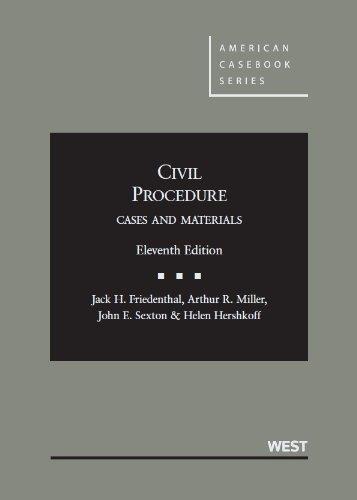3. In FINLEY v. UNITED STATES, 490 U.S. 545, 109 S.Ct. 2003, 104 L.Ed.2d 593 (1989), plaintiffs...
Question:
3. In FINLEY v. UNITED STATES, 490 U.S. 545, 109 S.Ct. 2003, 104 L.Ed.2d 593 (1989), plaintiff’s husband and two of her children were killed when their plane struck electric power lines on its approach to a city-run airfield in San Diego, California. Plaintiff alleged that the Federal Aviation Administration had been negligent in its operation and maintenance of the runway lights and in its performance of air traffic control functions, and invoked jurisdiction under 28 U.S.C. § 1346(b). Later, plaintiff was allowed to amend her complaint to include state tort claims against the city of San Diego and the utility company that maintained the power lines. The Court of Appeals reversed the District Court’s decision to allow the amendment, and the Supreme Court affirmed:
* * * It remains rudimentary law that “[a]s regards all courts of the United States inferior to this tribunal, two things are necessary to create jurisdiction, whether original or appellate. The Constitution must have given to the court the capacity to take it, and an act of Congress must have supplied it …. To the extent that such action is not taken, the power lies dormant.” The Mayor v. Cooper, 6 Wall. 247, 252, 18 L.Ed. 851 (1868)(emphasis added) * * *.
Despite this principle, in a line of cases by now no less well established we have held, without specific examination of jurisdictional statutes, that federal courts have “pendent”
claim jurisdiction * * * to the full extent permitted by the Constitution. Mine Workers v.
Gibbs * * *. * * *
Step by Step Answer:

Civil Procedure Cases And Materials
ISBN: 9780314280169
11th Edition
Authors: Jack Friedenthal, Arthur Miller, John Sexton, Helen Hershkoff






